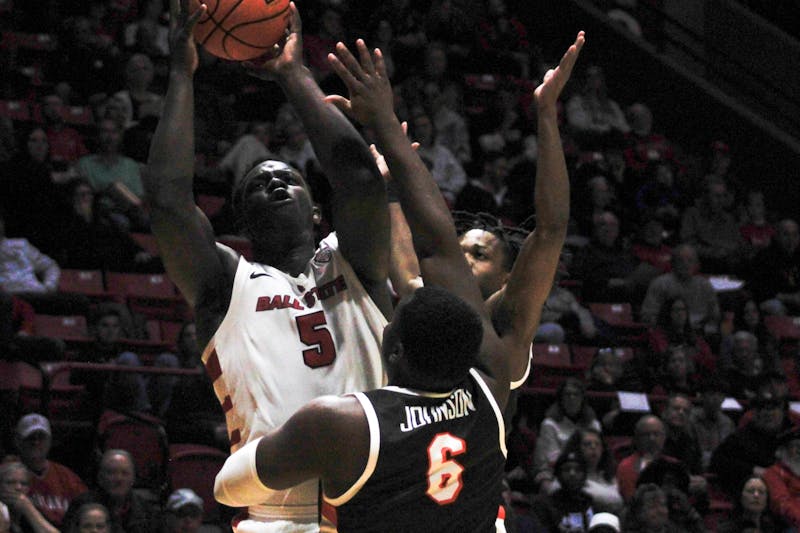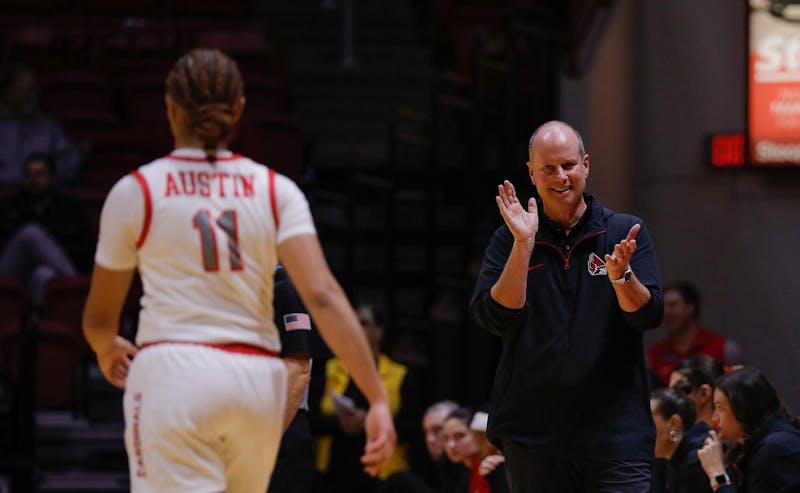Grayson Joslin is a third-year journalism major and writes “Soapbox” for The Daily News. His views do not necessarily reflect those of the newspaper.
Over this past winter break, I woke up one morning to see a Facebook post that immediately captured my interest.
This particular post showed a photo of lions that appeared to have escaped the Indianapolis Zoo. I had several Facebook friends who shared this post. It was clear both the person who originally posted it and those viewing and reposting it believed it to be fact.
But it wasn’t.
Almost 12 hours later, an ensuing post from the Indianapolis Zoo debunked it with the zoo stating the photo “came from a safari trail camera in Africa” and not their zoo at all.
When I first saw that post, of course, it caught my attention, but my gut feeling told me it couldn’t be real. I clicked on the account that originally posted the video and saw the description for the account was “parody news and memes.”
It took me less than a minute of “investigating” to debunk it on my own accord. Checking who has posted information is one of the several strategies associated with media literacy.
Except media literacy isn’t widely taught.
The National Association for Media Literacy Education defines media literacy as the “ability to access, analyze, evaluate, create, and act using all forms of communication.”
In essence, media literacy encourages people to ask questions about the information they are presented through advertisements, television programs, news broadcasts and other forms of media.
There are things we should all ask ourselves, like who or what is presented, how are those components portrayed, what audience the information is being targeted at and how the information is being presented.
I first learned about media literacy during my senior year English class.
As editor of my high school’s newspaper, even if I didn’t consider journalism to be my career path at the time, I took great interest in how I interacted with and consumed media.
However, the reality of the situation was that we only really spent two full weeks out of the school year learning about the topic — two weeks out of 13 years of primary education.
Now, I realize how people have come to trust what they saw at face value and share misinformation, which has led to eroding trust in journalism.
Media literacy is important for me as a journalist because our democracy rests on the free press and the citizens who can read, analyze and ask questions about the news they are reading.
I’m grateful I got even one class lesson based on media literacy before college. A 2022 study by Media Literacy Now and the Reboot Foundation found 62 percent of adults did not learn about media literacy in school.
As media messaging tactics become more sophisticated and new media becomes increasingly ingrained into our society, it doesn’t make sense that we’re severely lacking an emphasis on media literacy in our general education.
In my household, asking questions was something instilled in me from a young age. I consumed a large amount of information daily; I watched the morning news with my grandma and the nightly news with my mom. When I would have a conversation with my mom and I brought up something factually faulty, she would challenge me to “state my source.”
I thought my mom was breathing down my neck, worrying about every little detail. But looking back, I realize she wanted me to get my information from reliable sources and analyze all pieces of the information.
One of the reasons why I am so passionate about media literacy is that it goes hand in hand with the news industry. In October 2022, Gallup released a poll that found 38 percent of Americans didn’t trust the media, while only 34 percent had a “great deal or fair amount” of trust in the media. For comparison, when the same poll was taken in 1972, almost 70 percent of Americans had trust in the media.
This is extremely troubling and complicates the work many of us do as journalists. Free media is meant to be a pillar of a democratic society, but without trust, it begins to crumble.
We are navigating a growing technological landscape that is always in flux and with that comes distrust in the media.
Across the board, whether it’s a major newspaper, college newspaper or even a local paper servicing a town of a few thousand, there is a good chance there will be some comment on a post disparaging the work journalists do.
No longer is the news just reading the local paper before going to work and watching NBC News Anchor Tom Brokaw every night with an aura of trust surrounding him. We are in the age of easy access where we go to the first link Google suggests for a news article without checking who is publishing it or if it’s even trustworthy.
A recent example of our over reliance on social media and how quick we are to trust the first thing we see is the unsealing of court documents relating to Jeffrey Epstein. In the weeks leading up to the release of the documents, people across the internet predicted what or, better yet, who would be found in the Epstein documents.
Some people on social media assumed since the names of notable celebrities and public figures were included in these documents, they were automatically complicit in the same acts Epstein was arrested for in 2019. However, the inclusion of those names could also just mean they were loosely associated with Epstein or mentioned within his initial interviews with investigators.
The unsealing of these documents became a fertile ground for a wave of misinformation. But it stands as a reminder we should ask questions and not automatically believe the first thing we see online.
In my eyes, everyone — whether they are a Baby Boomer or Generation Z — should have the chance to learn how to be conscious and literate when it comes to the media.
How can we do this? A great way to start is by including a thorough media literacy curriculum in our public schools.
Before children graduate high school and head into the wide open of the real world, they should be educated on how to engage with the different types of media that exist now. Studies published in Harvard's Graduate School for Public Policy's Misinformation Review in December 2021 showed digital literacy measures were found to be important in “predicting truth from falsehood” when it comes to news headlines.
In our increasingly personalized media consumption, teaching media literacy in our schools isn’t an option anymore: it’s a must.
Beyond the educational environment, we must use due diligence to analyze and understand the information we are consuming and ask ourselves if it is unbiased and trustworthy.
Understanding media is a two-way street. The public consuming media must also do their part by not accepting what they see at face value and actively engaging with and questioning it.
It may seem like an overwhelming task to begin implementing media literacy into your routine, but it can be as simple as what words we use to search for something or seeing if the account that posted “news” is actually a satire or parody account.
The United States is at a disadvantage in media literacy. Published by the Open Society Institute in Bulgaria, the 2023 edition of the Media Literacy Index placed the United States 16th in the world in media literacy — on par with South Korea — scoring a 60 on a scale of 100. For comparison, the highest-scoring country, Finland, scored a 74.
There is work we need to do to improve our society’s media literacy skills, but it starts with ourselves and opening our minds to be more critical about what we are consuming.
When we place a higher emphasis on media literacy, we will be able to sniff out the misinformation and clickbait surrounding us in our lives.
Contact Grayson Joslin with comments at grayson.joslin@bsu.edu or on X @GraysonMJoslin.





The Daily News welcomes thoughtful discussion on all of our stories, but please keep comments civil and on-topic. Read our full guidelines here.